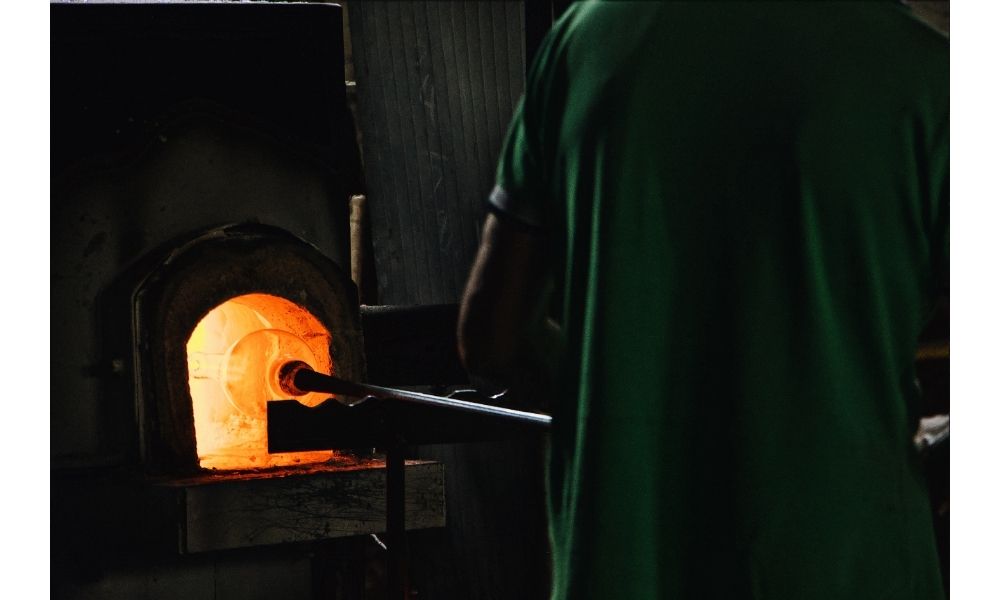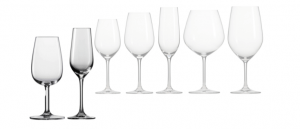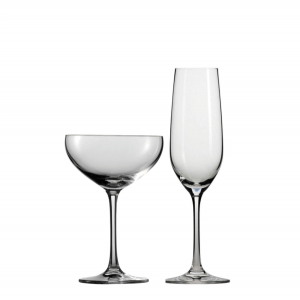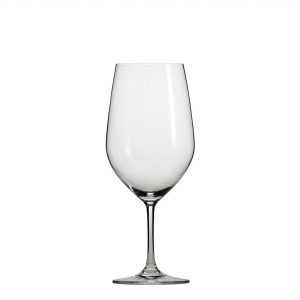$240.00
Across the landscape of vast vineyards, hidden in luscious, untamed corners, a secret world thrives—home to wild grapes and the unsung heroes of wine-making. Here I’ve uncovered the captivating considerations and challenges that come with uncorking the potential of these untamed gems.
Botanical Characteristics: A Symphony of Vines
Imagine a botanical orchestra where vines, leaves, and tendrils sway to the rhythm of the wind. Wild grapes, like the whimsical conductors of this symphony, bear distinctive botanical characteristics. Woody, perennial vines adorned with compound leaves and tendrils that reach out like nature’s fingers, these grapes paint a canvas of untamed elegance in the vineyard. As they climb trees with a determination unique to the wild, they set the stage for a grapevine spectacle.
Small Size and Low Sugar Content: A Rebel’s Zest for Life
A wild grape possesses personality as bold as its diminutive size. Wild grapes, often smaller than their cultivated counterparts, flaunt their edge with higher acidity and lower sugar content. It’s as if they’ve chosen to embrace a tangy zest for life, ready to challenge the norms of wine-making. This rebel spirit, however, comes with a twist—a lower sugar content that can result in wines with a touch of moderation in alcohol and a splash of vivacious acidity, impacting the overall flavor profile.
Seed Content: Guardians of Complexity
Within the heart of wild grapes lies a secret stash—seeds, tiny guardians of complexity. Compared to their cultivated kin, wild grapes tend to carry a higher seed-to-pulp ratio. These seeds, like flavorful sentinels, add character to the wine, weaving a tapestry of astringency and bitterness. The wild grape knows the dance of balance; too many seeds could turn the wine into a riot, but when orchestrated with finesse, they contribute to a symphony of flavors that lingers on the palate.
Wild Variability: A Genetic Carnival
Picture a family reunion where each member brings their own unique dish to the table. That’s the wild grape family—a genetic carnival boasting a spectacular degree of variability. Within a single population of wild grapes, flavors, aromas, and other characteristics can vary wildly. It’s a winemaker’s challenge, akin to conducting an orchestra where every instrument plays a different tune. Crafting a consistent wine from this genetic revelry requires skill, patience, and perhaps a touch of magic.
Tannins and Polyphenols: Rockstars of the Grape World
Wild grapes with a wild spirit, also flaunt higher levels of tannins and polyphenols—the undisputed rock stars of the grape world. These compounds, akin to guitar riffs and drum beats, bring structure and complexity to the wine. However, like any rock concert, a delicate balance is crucial. An excess of these rock stars could turn the wine into a bitter ballad, a taste not for the faint of heart but appreciated by those who seek bold sensory experiences.
Disease Resistance: Evolutionary Superpowers
In the wild grape kingdom, resilience is the crown jewel. Wild grapes have evolved to be more resistant to pests and diseases, standing tall in the face of adversity. But we know the truth—they aren’t immune. Pests and diseases can still sneak into their wild gatherings, threatening to disrupt the very essence of the wild grape elixir. The evolutionary superpowers, while robust, require vigilant guardianship
Cultural and Legal Considerations: A Dance with Tradition and Law
As the sun sets over the vineyard, shadows of legal and cultural considerations cast a theatrical aura. In many regions, using wild grapes for winemaking is a dance with the law. Regulations stand guard like sentinels, and winemakers must tread carefully to avoid legal pitfalls. Beyond the laws, cultural and historical traditions loom large. The acceptance of wild grape wines faces the scrutiny of tradition, creating a tapestry where the threads of acceptance and reluctance are intricately woven.
Cultivation Challenges: Wild at Heart
In the heart of the vineyard, lies the greatest challenge—cultivation. Wild grapes, with their untamed spirit, aren’t always the vineyard’s best friend. They have specific habitat requirements, craving freedom like rebels yearning for the open wild. Growing them in the orderly rows of a vineyard becomes a wild dance against the constraints of cultivation. As with all wild things, it stands resilient, a symbol of the untamed essence that lingers in every sip of wild grape wine.
Cheers to the rebels in the vineyard, the wild grapes that defy the norms, and the wines that bear the untamed spirit of nature’s symphony.
]]>- For red wine, choose a glass with a larger bowl and wider rim, as this will allow the wine to breathe and release its flavors and aromas.
- For white wine, choose a glass with a smaller bowl and a narrower rim, as this will help to preserve the wine’s crisp flavors and aromas.
- For sparkling wine, choose a flute glass, as the long, narrow shape will help to maintain the wine’s carbonation and highlight its bubbles.
- For dessert wine, choose a smaller glass, as this will allow you to enjoy the wine’s sweetness without having to drink too much.
Ultimately, the best wine glass for you is one that you find comfortable and enjoyable to use. You may want to try different glasses to see which one best suits your needs.
With so many options flooding the markets nowadays, sometimes it feels like you can never find what you are looking for. Here at BestWineGlass.com, we bring together what we feel are some of the best glassware options from all over the world, together in one convenient location, for you and your loved ones to enjoy.
Our glassware selection will fit your every need. Whether you are in need of a high-end, mouth-blown, hand-finished Bottega del Vino Chardonnay crystal glass, or something perfect for outside or the pool where glass is not permitted, like the Govino BPA-free composite Shatterproof glass. BestWineGlass.com has what you need.
Cheers,
BestWineGlass.com
]]>During the 17th and 18th centuries, the tradition of cut crystal glass making spread throughout Europe and was particularly popular in England and France. In France, famous glass makers such as Baccarat and Lalique became known for their intricate designs and exceptional craftsmanship. Today, cut crystal remains a symbol of luxury and is often used in high-end table settings and decor.
]]>
Have you ever found yourself wondering why some people refer to some wine glasses as crystal? What is the difference between crystal and plain old regular glass anyway? Why do they say crystal glassware is better for wine and beverages?
We should all be fairly familiar with glass, a solid and transparent material that is used in all facets of our daily lives. Made from natural raw materials (sand, soda ash, and limestone) that are melted at very high temperature to form glass. At high temperature glass is structurally similar to a liquid, but at ambient temperature it behaves as a solid. As a result, glass can be poured, blown, press and molded into plenty of shapes.[4]
This made glass ideal to hold beverages such as wine, where it can be blown into different shapes to maximize the aroma and taste of the particular wine, and is also transparent so the colors of the wine can be observed.
Not all glass is created equal. Traditional glass has its limitations, mold it too thin and it becomes brittle and weak, and limitations cap the clarity of traditional glass’ transparency. People soon came to learn by adding lead oxide to the glass making process, glass became much stronger and showed improved clarity.[5] This clearer and sharper looking glass often reminded people of diamonds, and the term ‘crystal glass’ started being used. Glasses with lead oxide content first showed up in Mesopotamia, considered the birthplace of the glass industry. The earliest known example is a blue glass fragment from Nippur dated to 1400 BC containing 3.66% PbO.[3] Lead glass occurred in China during the Han-period (206 BC – 220 AD). There, it was cast to imitate jade, both for ritual objects such as big and small figures, as well as jewelry and a limited range of vessels. Since glass first occurred at such a late date in China, it is thought the technology was brought along the Silk Road by glass workers from the Middle East.[3] Lead crystal glassware was formerly used to store and serve drinks, but due to the health risks of lead, this has since become rare.
Modern crystal glass was born. No longer using lead oxide, modern crystal glass is made with a variation of barium oxide, zinc oxide, or potassium oxide. Lead-free crystal has a similar refractive index to lead crystal, but it is lighter and it has less dispersive power.[1] Crystal glasses are stronger therefore can be made thinner and lighter than traditional glass, enhancing your experience when drinking your favorite wine regardless of the type. Glasses made with traditional glass are heavy and bulky, whereas crystal glasses are clearer and lighter.
Many modern glassware companies deploy further techniques to strengthen their glassware. Schott Zwiesel for example, introduced it’s Tritan technology. By composing glass with Titanium and Zirconium instead of lead, Schott Zwiesel in collaboration with the University of Erlangen in Germany, created a new superior crystal- Tritan Crystal. The Tritan composition, along with new manufacturing technology exclusive to Schott Zwiesel, delivers a superior Crystal Glass in its appearance, durability, and design. [6]
With modern technology, glassware companies around the world are constantly innovating and improving peoples ability to enjoy their favorite wine to the fullest. Here at BestWineGlass.com, we are constantly seeking to showcase the best glassware technology the world has to offer, in one convenient location for you and yours to enjoy.
Cheers,
Zach
Works Sited
[1] “About Lead-free Crystal”. Archived from the original on 21 January 2016. Retrieved 22 December 2011.
[2] “Council Directive 69/493/EEC of 15 December 1969 on the approximation of the laws of the Member States relating to crystal glass”.
[3] Tait, Hugh, ed. (2004). Five Thousand Years of Glass. University of Pennsylvania Press (orig. British Museum Press). ISBN 978-0-8122-1888-6.
[4] https://www.glassallianceeurope.eu/en/what-is-glass#:~:text=Glass%20is%20made%20from%20natural,temperature%20it%20behaves%20like%20solids.
[5] Benvenuto, Mark Anthony (24 February 2015). Industrial Chemistry: For Advanced Students. Walter de Gruyter GmbH & Co KG. ISBN 9783110351705.
[6] https://www.crystalclassics.com/tritan/tritanstory.htm
]]>
BestWineGlass.com was founded in August 2002, and has been providing quality glassware to the public ever since. Located in Lake Barrington, IL. Our small family business is like any other little shop on main street. We turn the lights on and off and even answer our phone or if we are busy we’ll call you back. Special requests are an opportunity to get to know our customers. Please do not hesitate to call if we can be of service in any way. 312-981-9127
Cheers!
-BWG
Glasses are the most important tool for our enjoyment of wine. Understanding how a wine glass affects the taste of our wines is important for enjoying any wine to its fullest potential. Preferences may vary, but there are predictable preferences that most of us will share. At BestWineGlass, we believe the most important aspect of a glass is how it makes the wine taste.
Setting aside the look (aesthetics) of the wine glass, the feel of the wine glass in our hand and even the cost of wine glasses and focusing our attention strictly on how different types of wine glasses affect the taste of our wines requires us to take a closer look at the anatomy of different types of wine glasses. There are seven basic types of wine glasses in common use today. From left to right they are, Port, Sherry, White Wine, Red Wine, Champagne, and two specialized red wine glasses, the Burgundy and the Bordeaux. The obvious differences in size and shape of different types of wine glasses make each one more suitable for different types of wine.
Specialty Glasses
The first two wine glasses are the Port wine glass and the Sherry wine glass. These specialty wines are very potent and typically consumed slowly in small amounts. The port wine glass is small because of the way port is consumed slowly in small amounts, but still large enough to swirl and capture aromatics that affect how the wine tastes. Sherry tends to be more acidic and higher in alcohol. Getting a good full breath of these hyper-sweet alcohol-rich aromatics tends to overwhelm the palate and make the wine hard to taste. The small narrow sherry glass tends to minimize the effect of sherry’s smell on it’s taste and allows the drinker to taste sherry’s subtle fruits and minerals without overwhelming one’s senses. This is why the sherry glass also makes a perfect tequila glass for tasting the finest Tequilas in the world.
White wines are generally less aromatic than red wines and usually taste better at cooler temperatures. White wines tend to have very narrow ranges of temperature at which they taste best, so serving them in smaller amounts from a larger container better able to hold its ideal temperature longer is of significant benefit. The best types of white wine glasses are 9-14 oz. It’s common to use a glass at the smaller end of this spectrum, say 9-11oz., as a “white wine glass” while using a glass at the larger end of this spectrum, say 12-14oz. as a “red wine glass.” This is not unreasonable for beginners or those with limited storage space and we sell a combo “Red/White” set of wine glasses for exactly this reason. However, we feel that this “standard” red wine glass is better for fuller-bodied, richer, bolder white wines that present stronger aromatics like full, rich and complex Chardonnays. In this way, the Red/White pair of glasses really represents the different wine glass types for the full spectrum of white wines you might enjoy. A survey of major types of white wine will reveal the difference the size of the glass can make in side-by-side comparisons.
Sparkling Wine Glasses
The fifth glass pictured needs little introduction. The “champagne flute” has become so closely associated with Champagne that few people realize that there was ever a different style used for “bubbly.” The coupe or “saucer” style was more in vogue when traditional French Champagne was only lightly bubbly. Whether enjoying a true Champagne or any other “sparkling” white wine, today’s versions tend to be extremely effervescent and are also drank ice cold. The small narrow glass is best for preserving both the effervescence and the temperature longer. Many sparkling wines are only lightly effervescent and often enjoyed at somewhat higher temperatures. Sparkling reds like Lambrusco should be enjoyed from larger types of red wine glasses and sparkling Rose’ wines should be enjoyed from smaller types of white wine glasses.
Finally, we come to the most distinctive types of wine glasses in the set. of seven basic wine glasses you must have. The sixth and seventh glasses pictured above are types of red wine glasses that any real wine lover becomes familiar with pretty quickly. These are the “burgundy” and the “bordeaux” respectively. They’re named for the famed Burgundy and Bordeaux wine-making regions in France. Both types of red wine glass are large enough to capture the wide variety of complex aromas that come from red wines.
The Burgundy Glass
The bowl of the “burgundy” glass is wider, shorter and more dramatically tapered. This shape better captures the complex aromas of the world’s best lighter red wines. The Burgundy Region of France is known for originating the best example of complex, lighter and more fruit-forward red wines like Pinot Noir. The large surface area of this glass allows each swirl to produce a large volume of aromatics and the relatively narrow rim captures them to be focused on the nose very intensely while drinking. Making it easier to smell the distinctive aromatics of a world class Pinot Noir so dramatically affects its taste that you would hardly recognize it as the same wine from a different glass in side-by-side tasting comparisons. The Burgundy glass so thoroughly captures wine aromatics and focuses them on the drinker’s nose that many are led to wonder why this is not the only type of wine glass ever needed to enjoy every wine.
Many people do think the Burgundy is the only glass they need, especially for all types of red wines. However, “more” is not always better. The exclusive use of this larger glass completely ignores the use of size and shape to better control and deliver the correct aromatics, in the correct amounts and at the correct temperature to best showcase each type of wine given each drinkers preferences. Close attention to all these important factors will help you find the correct wine glass for your enjoyment. Try your favorite fruit-forward, less-dry Pinot Noir in its correct burgundy glass. Really pay close attention to the smell and to the taste, then pour the exact same wine into your white wine glass and see how different it is immediately. Try even the larger white wine glass (the generic “Red Wine” glass) and see if it’s any better. It won’t be much better. Pour the rest back into the burgundy glass and stop torturing yourself.
The Bordeaux Glass
Perhaps the best example of why different types of wine glasses, especially different types of red wine glasses, is so important is to really experience the uses and value of the Bordeaux wine glass. Just like the burgundy glass originated along with the wines it presents best in Burgundy, France, the Bordeaux glass evolved to best present the full-bodied, richest and most aromatic red wines, like Cabernet Sauvignon, produced for many hundreds of years and perfected in the Bordeaux Region of France. As we said before, more is decidedly not always better. Many of these rich reds are also high in tannins. That’s the bitter taste and tart “pucker” factor you experience in many richer red wines.
The Bordeaux glass also has a large bowl. Like the burgundy, this enables the collection of a large amount of these aromatic compounds when you swirl. The difference with the Bordeaux is that the smaller surface area relative to the circumference of the rim tends to minimize your experience of some of the more acidic compounds, especially tannic acids common in red wines and even sometimes added as clarifying agents in the final production of the wine. Compare your fully rich, bold Cabernet Sauvignon enjoyed in the Bordeaux glass to what it’s like in the burgundy glass and you’ll see what a difference these glasses can make.
Any avid wine enthusiast will notice many of the differences using the correct glass makes in enjoying different types of wines. The more one consciously, purposefully experiments with glassware, temperature, aeration and even food pairing the more they will be rewarded with an increasing ability to find immense pleasure in the subtleties of many more types of wine. Enjoy! Never hesitate to give us a call if you have questions or anything at all we can help you with. (312) 981-9127
Cheers!
Alana
Rural Napa Valley: Country Roads, Nature and Vineyards
The northern end of the Napa Valley is pretty rural! Most people think bougie glam when Napa comes to mind, but really, up here in Calistoga it’s mostly country roads and nature. Vineyards of course are plentiful, but they’re contrasted nicely by the volcanic mountain ridges that dominate the eastern skyline, and the soft rolling mountains in the west covered in oak and redwood trees.
I was driving along one of our country roads admiring the rocky cliffs above when I pass my uncle Larry’s property and notice he still has grapes on the vine. Way past when he should! But uncle Larry is by nature always doing something interesting: probably invented the word eccentric for someone just like him I’m sure! He makes some world class wine too, has a garage the size of Rhode Island with cars and parts strewn everywhere, raises three homeschooled teenagers who are always running wild somewhere on the property, and hosts, at last count, 10 dogs of various shape and size, (rescue mutts.) To add to his mystique, late one night when we all drank way too many bottles of wine to count, he let slip that he helped prevent World War 3 with Russia when he was in the military during the 1980’s! But now he’s all serious about the subject and won’t say another word.
Anyways- I was driving by his place, mid-January, and I noticed he still had an acre of grapes hanging on the vine! I was like WHAT THE HECK IS HE UP TO? Because no one else still has grapes out: the rest of the county harvested way back in October! I set to thinking about it because I always like trying and figure him out! So while I’m headed down his long ass gravel driveway I contemplate the possibilities.
Effect of Napa Valley Wildfires in 2017
The last time he had grapes out longer than he should was when a crazy wildfire rolled through here in 2017, Tubbs Fire, and the whole northern end of the Napa Valley got evacuated. And as fate would have it, that was right toward the end of harvest and tons of big red grapes were still on the vine. Then those grape’s sugars peaked and should’ve been harvested but nobody was around to do it, so those grapes ended up being sold for vinegar later in the year. He lost two acres of wine grapes that year but he didn’t care, said that’s the natural way of a farmer!

What’s a Grapevine Disease?
But maybe this year his vines got phylloxera or another of the 50+ grapevine diseases? When phylloxera or the other diseases hit, the grapes can still grow but the flavor isn’t worth a damn, and yields go way down so growers don’t even bother with the fruit. The only solution is to replace the grapevines, crazy expensive. Napa Valley alone has replaced over half its vines the past 30 years because those bugs are nasty. I considered this option for Uncle Larry’s grapevines but their leaves never got too red and looked healthy all season, so I tried to think of another reason why he still had grapes on vine mid-January.
Napa Valley Dessert Wine?
Dessert wine! Of course! He won’t be able to make ice wine because it doesn’t get cold enough here to hard-freeze those grapes into tiny raisins. But dessert wine in Napa Valley is popular: vintners let the grapes stay on vine months longer than normal so the sugar levels skyrocket. Then they harvest and ferment, and because there’s so much sugar winemakers have to stop fermentation at the right point so the alcohol level doesn’t get too high- and that means lots of sugar and sweetness left over to balance those nice firm acids- thus dessert wine! Maybe he’s leaving his grapes out long enough so they might catch that Noble Rot, Botrytis fungus, which contributes amazing flavor to a dessert wine, and elevates the value of a wine ten fold. (*see French Sauternes or Hungarian Tokaji)
Dessert wines also get special treatment when drinking and have very specific glassware to capture all the aromas and taste profiles.
Napa Valley Cabernet is the Bomb!
 So I ran out of time because the driveway ends, and I arrive at his modest country house which rests on a hill overlooking the property below. And there he is chopping wood with an axe and dressed in an old tie-dye shirt. He peeks up at who’s approaching and sees my truck then waves with a sideways grin. I laugh because he’s a spontaneous guy and always has a trick up his sleeve. I pull up and carefully hop out the truck, greets me with a big hug. We pull aside to chat and I can’t help asking, “So what’s up with grapes still dangling by the road Unc?” He turns toward the direction they still hang and grins. “Ol Pete contracts them now for surplus, but his harvest on his own property gave him more than he needed this year. Still paid me but said I should keep um! So I’m gonna try my hand at making some Madeira! Wanna help?” I smack palm to forehead! Maybe Port but Madeira?? It’s basically a fortified wine like port but literally gets seasoned to age like it would on a “ship voyage across the Atlantic 500 years ago!” It’s called the estufagem process: basically hot and cold again and again until full on wine abuse! In the old country of southern Europe families keep barrels of Madeira in their house attics for decades and decades to properly age it! Of course uncle Larry is gonna try to make some, it’s the weirdest wine of them all! He grins a familial kindness at me and says, “Hey, it’s after noon somewhere right? Whatchyu say we go downstairs- just bottled the 2016 Cab??” I sure like that idea and nod, follow him into that infamous wine cellar and he hands me a Riedel glass, and now I’m smiling sideways because “tasting” with uncle Larry means only one thing! I’m about to get straight up Cabernet bombed!
So I ran out of time because the driveway ends, and I arrive at his modest country house which rests on a hill overlooking the property below. And there he is chopping wood with an axe and dressed in an old tie-dye shirt. He peeks up at who’s approaching and sees my truck then waves with a sideways grin. I laugh because he’s a spontaneous guy and always has a trick up his sleeve. I pull up and carefully hop out the truck, greets me with a big hug. We pull aside to chat and I can’t help asking, “So what’s up with grapes still dangling by the road Unc?” He turns toward the direction they still hang and grins. “Ol Pete contracts them now for surplus, but his harvest on his own property gave him more than he needed this year. Still paid me but said I should keep um! So I’m gonna try my hand at making some Madeira! Wanna help?” I smack palm to forehead! Maybe Port but Madeira?? It’s basically a fortified wine like port but literally gets seasoned to age like it would on a “ship voyage across the Atlantic 500 years ago!” It’s called the estufagem process: basically hot and cold again and again until full on wine abuse! In the old country of southern Europe families keep barrels of Madeira in their house attics for decades and decades to properly age it! Of course uncle Larry is gonna try to make some, it’s the weirdest wine of them all! He grins a familial kindness at me and says, “Hey, it’s after noon somewhere right? Whatchyu say we go downstairs- just bottled the 2016 Cab??” I sure like that idea and nod, follow him into that infamous wine cellar and he hands me a Riedel glass, and now I’m smiling sideways because “tasting” with uncle Larry means only one thing! I’m about to get straight up Cabernet bombed!
Cheers!

























